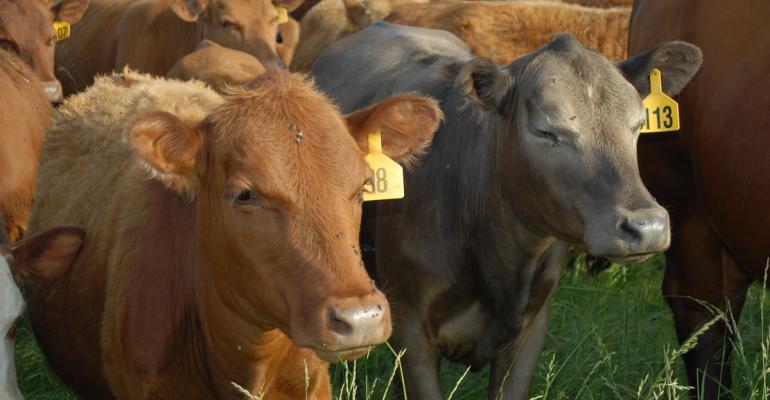Beef Producer: The imminent implosion of grassfed beef

The mainstream press usually gets it wrong when they report on agricultural issues, and a recent attempt at covering grassfed beef missed the mark once again.
by Walt Davis 1 | Jan 17, 2018
Maybe some people just aren’t capable of understanding complex agricultural-scientific-ecological-economic issues.
My grandson sent me an article from National Public Radio that says some researchers see a wreck coming because the demand for grassfat beef is growing so fast that we are in danger of running out of grass.
“Besides that, CO2 levels are so high that plants are growing too fast,” the author wrote. “So fast and big that they are running out of nitrogen and the nutritional content of the grass is dropping and soon will be so low that animals will starve and we will have to supply nitrogen fertilizer to keep things from going to pot and cows produce carbon dioxide and methane that cause global warming!”
This is the third or fourth article I have seen lately warning about the “problems – financial, logistical and ecological” of grass finished beef. It is probably politically incorrect to suggest that such shrill writing is the blind with an agenda leading the blind without a clue, but any other explanation I can think of would be cruder yet.
It is typical of the crisis management mentality, the hunt for the silver bullet solution, that has gotten us into so much trouble. I have caught flak in the past as being a global warming/climate change denier for daring to suggest that the situation might be a tad more complex than what is espoused by Gore and Company. The fixation on so-called greenhouse gases reminds me very much of a solution looking for a problem. Is the earth warming? It is. Ever since the last ice age began to warm up – in a repeating sequence of cold period, warm period, cold period, stretching as far back as we can see.
Humans have done and are still doing tremendous damage to our planet, but trying to demonize the internal combustion engine or cow burps (Can you say free enterprise?) for this damage is simplistic nonsense.
There is plenty of blame to go around and agriculture owns a big share. We have not been good stewards of our natural resources; we have squandered soil, water and biodiversity by using practices that are wasteful. Too often, we take short-term gains that must be paid for with long-term costs.
I don’t know if increased carbon in the atmosphere is good or bad. It makes plants grow faster and saves water. But I do know that increasing the carbon content of the soil is a very good thing for agriculture, for our environment and for all humankind. We know how to do this, and more producers are adopting techniques like no-till, cover cropping, and good grazing management. They are doing this, not because government demands it, but because it is good for their operations, their families, and their bank accounts. It is the right thing to do on all fronts.
To return to the NPR article and similar articles that have appeared lately, to blame increased CO2 levels for decreased nutritional value of forages is quite a reach. It is true that foodstuffs of all kinds, from vegetables to grains to animal products, have far less mineral content than they did 50 years ago. There are several reasons for this but the elephant in the petunia patch is the far-too-common loss of soil life brought about by poor cultural practices. Soil life is what produces true soil productivity – nutrients available for plants, good soil structure to hold water and air, and pathogens and parasites under control.
Soil left bare, whether by tillage or by abusive grazing, loses soil life. Most chemicals used in agriculture from fertilizers to pesticides of all kinds reduce soil life. The solution offered in the NPR article – nitrogen fertilizer – shows how poorly the author understands grassland ecology; adding soluble nitrogen gives a short term fix that will make a bad situation worse as it kills off the soil life nature uses to make nitrogen and many other nutrients available to the whole grassland complex.
If producing more grass-finished beef profitably is the goal, the logical method would be to develop management that promotes the health of all parts of the soil-plant-animal-wealth-human complex. Good graziers all over the world use this type management to double, triple, and sometimes quadruple the amount of useable forage. Techniques will vary depending on local conditions and whether native or tame grassland is used but properly done, this management regenerates rather than degrades natural resources.
Anyone struggling with profitability with row crops would be wise to take a hard look at converting some of their cultivated land into managed pasture. Allen Williams of Mississippi says that land that is capable of producing 120 bushels of corn /acre could produce 8,000 pounds of high-quality forage dry matter per acre instead. Assuming a 50% efficiency of grazing harvest and a very conservative 20 pounds forage to one pound beef gain, that would translate to about 200 pounds beef gain per acre. If the tame forage sward is heavy in perennial forages, maintenance costs would be minimal for five or more years.
Get out your sharp pencil and plug in your own figures. What is your average corn yield and how many stocker calves could you buy with the money from selling your combine?